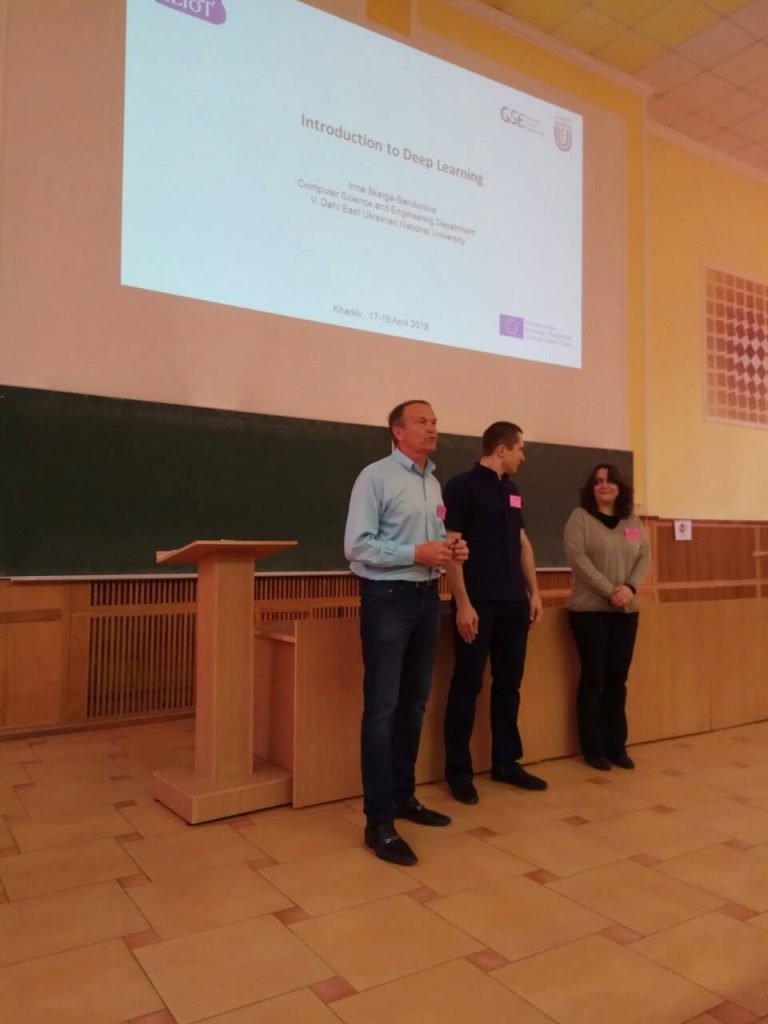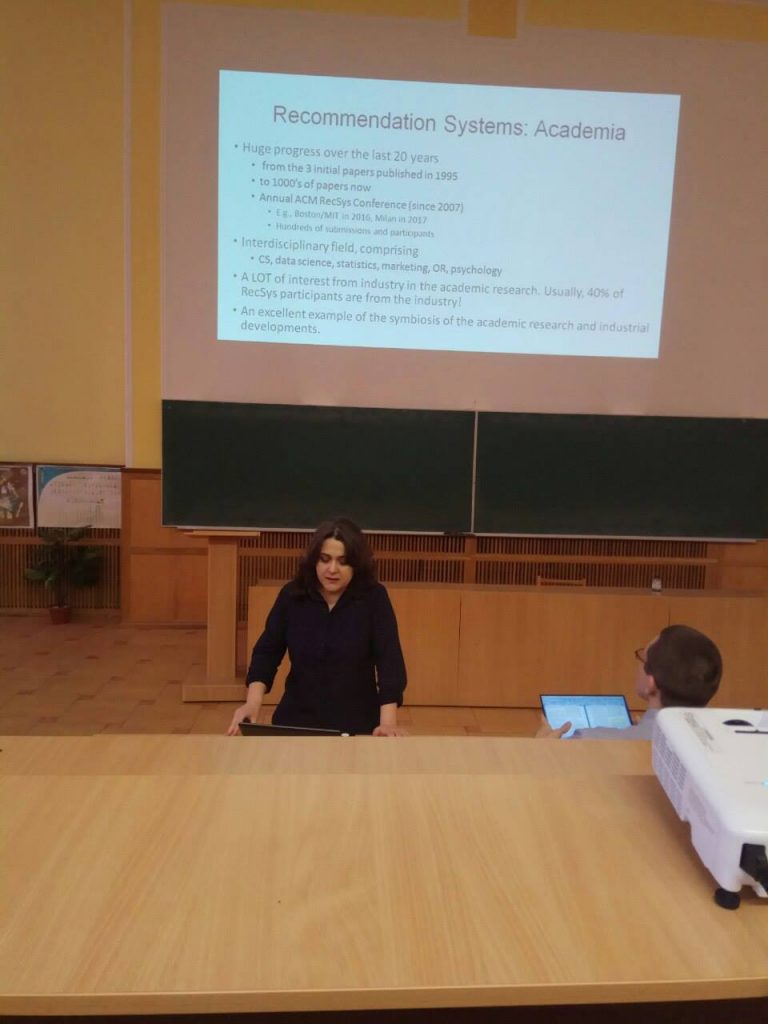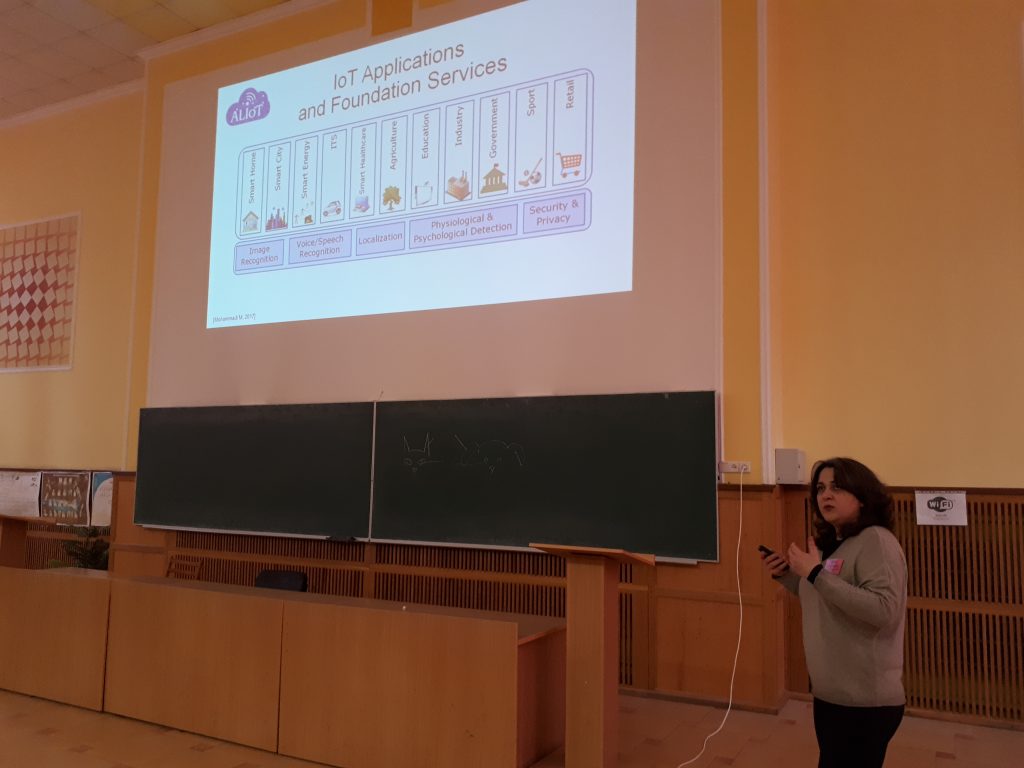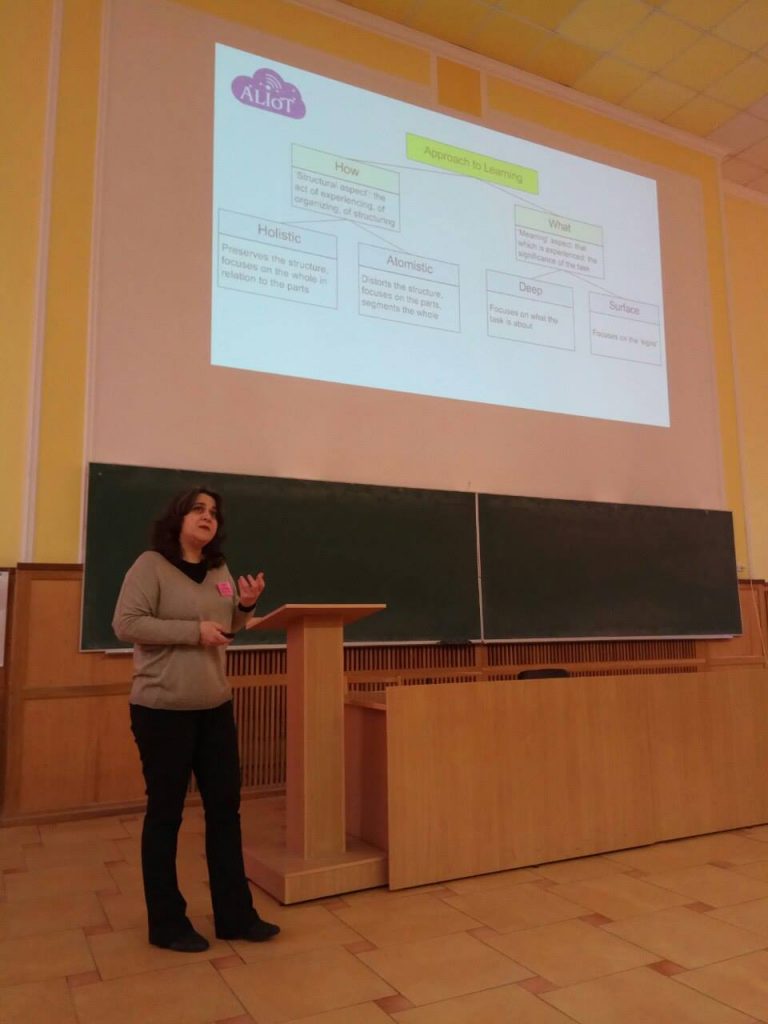Training on Artificial Intelligence, Machine Learning and Deep Learning and discussion of the MSc course “MC2 Data science for IoT and IoE” development results

During April 17-19, 2018 at National Aerospace University n.a. N.E.Zhukovsky “KhAI” the training from Prof. Inna Skarha-Bandurova from V. Dahl East Ukrainian National University will be conducted.
During these two days more than 70 BSc, MSc and PhD students took part in 3 days of training.
The fundamentals and the results of the development of MSc teaching course “MC2 Data science for IoT and IoE” in the frame of ALIOT project will be presented to the students and discussed with them.
Particularly the following modules will be discussed:
- MCM2.1 Fundamentals of big data science
- MCM2.2 Technologies of data mining and processing
- MCM2.3 Deep learning for IoT
The most successful participants of the training will receive the certificates.
Prof. Inna Skarha-Bandurova will give training sessions on the following topics :
I. Introduction to Deep Learning (DL)
- Approaches to learning
- DL taxonomy and key principles of DL
- IoT applications and foundation services
- A general stack of DL models as a service in the cloud platforms
- Common Data Sets for Deep Learning in IoT
Deep Learning gathers large halls around the world and this is not surprising. For several decades, we have seen great advances in this technology in many fields of application, such as computer vision and speech recognition. Scientists and manufacturers are in constant jumps, applying deep learning in a wider range of applications.
The first day is a classic introduction to Deep Learning and starts with the questions: What is Deep Learning? What is the difference between Deep and Shallow Learning? Is there any need to solve this technology and where do its possibilities end? In the second part we will talk about the model of deep convolution neural networks (Convolution Neural Networks (CNN)) and their application for real data processing tasks.
II. Recommendation Systems and Deep Learning
- Overview of Recommender Systems (RSes)
- Paradox of Choice
- The three generations (1G – 3G)
- Overview of some of the application domains
Recommendation systems are relatively new, but over the last 20 years, since the first scientific publications, they have become an important tool for analyzing large data and promoting sales and services of many Internet sites and mobile applications. Just imagine that up to 80% of movies viewed on the Internet received from the recommendations, 60% of the video clicks received recommendations on the home page on YouTube. And what to add deep training in advisory systems? – The use of Deep Learning led to a revolution in industrial advisory systems. Unlike traditional models of recommendations, in-depth training provides an understanding of the user’s requirements, the characteristics of the subject and the historical interactions between them. On this day, we’ll talk about three generation advisory systems, ways to process large data to provide the best advice and the role of deep training methods in promoting RecSys class systems.
III. Deep Learning for Human-Computer Interaction (HCI)
- Computational Interaction
- Future of HCI
- Focus on Gestures and Signs
- Video Streams that are fed from video cameras in an online mode under environment uncertainty
and variability conditions - Signs recognition with CNN
On the third day, we will not talk about the human need. And we will not talk about technology, because, in a sense, it’s an easy part. Human nature, its features in the use of computer technology – this is where we have so far stopped. The combination of modern technologies of deep learning and human capabilities, we are able to do, using this tool and how the relationship with technology changes everything around us, this will be discussed.



